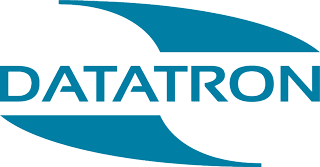How to meet compliance with a document audit trail
Since the implementation of the GDPR, individuals have the right to submit data subject access requests (DSARs). For employees, this information can span years, even decades. If it’s held in multiple systems, or if any of it’s paper-based, it can be difficult to ensure you’re collecting all relevant information. It can also be expensive to collate in time for the 30 day deadline. In fact, it’s estimated that in the UK, the cost of a single DSAR is anywhere between £3000 and £6000.
Then there’s the issue of fraud. Over half of organisations experienced fraud between 2021 and 2022, according to PricewaterhouseCoopers’ (PwC) 2022 Global Economic Crime and Fraud Survey. What’s more, 53 percent of those organisations reported a financial loss as a consequence.
To meet compliance, every business requires a detailed audit trail. By tracking user activity to detect unauthorised access and human errors, they help to reduce fraudulent activity. They also find details of any information edited or deleted, and provide individuals with all data relevant to them when a DSAR comes through.
Audit trails are the cornerstone in helping you meet high standards for data protection and reducing risk in today’s digital workplace. In this blog, we explore how your organisation can meet compliance with a document audit trail.
What is an audit trail?
An audit trail is a comprehensive record of your company’s activity, including every action taken, and by whom. The purpose of an audit trail is to provide a detailed, transparent, and auditable record of all activity.
If your business uses an Electronic Document Management System (EDMS), you’ll need to create and maintain an audit trail based on guidance from the BS 10008. This is the British standard for the implementation and operation of an EDMS, including how you should store and transfer information.
For example, the BS 10008 outlines how to transfer information between systems as well as what measures you need to take when migrating paper records to digital files. It also provides guidelines on the accessibility for records in case you need to present documents as legal evidence.
Audit trails also make it possible to track, analyse, and report on any changes made, including changes to your key business financials and employee information. This visibility helps you detect information errors and anomalies faster, reducing your business risk.
How do audit trails help your business meet compliance?
Audit trails are commonly used across business departments and industries that have strict regulations in place, like IT, healthcare, finance, and accounting.
These regulations exist to keep sensitive information safe. And, to ensure compliance, you’ll need policies and procedures in place.
For example, if you experience a security violation and there is an investigation, you may be required to show how the information was handled and by whom. It’s also likely that you will have a specific time frame to do this. In this instance, you can turn to your EDMS. The audit trail it automatically creates provides irrefutable proof on what information was leaked, when, and by whom.
But that’s not all an EDMS can do. With the right features, an EDMS can make a stressful situation automatically less stressful. For this to be the case, it needs a simple interface, and the ability to provide the right information to the right people, at the touch of a button.
How an EDMS makes compliance easy
A good EDMS will be designed with the user in mind. It will make access to files easy. But security will also be key.
Imagine your business is involved in legal proceedings and is asked to present documents to the court. There may be multiple records that the court needs to see. And the deadline to submit them might be demanding.
With an EDMS like Therefore, you can search for and find files almost instantly. Unlike some systems, it can group files together outside of naming conventions. So you’ll be able to find your documents even without knowing the exact sequence of text someone originally saved them under.
Therefore also enables role-based access policies. While your senior team members or compliance department colleagues will be able to access these files, it doesn’t mean everyone else using the system for their day-to-day job can.
But what happens if you find a key piece of data missing?
Therefore will automatically create an audit trail that logs every interaction a person has with your information. This means you can see when they accessed and deleted information. So you can follow up with them on why that happened, and determine if it was for a genuine work process or not.
Furthermore, with version histories you’ll be able to easily view each and every iteration of the document. This means that even if someone does edit out crucial information, you can recover it easily.
How Therefore can help you meet compliance with an audit trail
Audit trails show that your organisation has taken the appropriate measures to secure sensitive information and safeguard personal data. They also give you the chance to prove your business is compliant, identifying everyone connected to the data and the processes it’s been through.
Maybe this is why Datatron chooses to partner with Therefore. As a system it deploys clear and centralised audit trails, while Datatron’s implementation ensures compliance and safeguards against data security risks. And the best part is that Therefore creates the audit trails automatically, using the BS 10008 as guidance. So not only can you meet compliance standards and legal demands for documentation. You can do so easily, quickly, and with no additional stress.
And for businesses still using paper, our bespoke audit trail solutions cover document collection and transformation. This applies to the digitisation process, as well as the storage of documents and even their destruction. You’re also able to quickly track all changes made throughout your digitisation journey. That way, you always have access to the most up-to-date information whenever you need it.
To learn more about how Datatron and Therefore can help your business optimise its document audit trail, read our case studies or contact us today.

